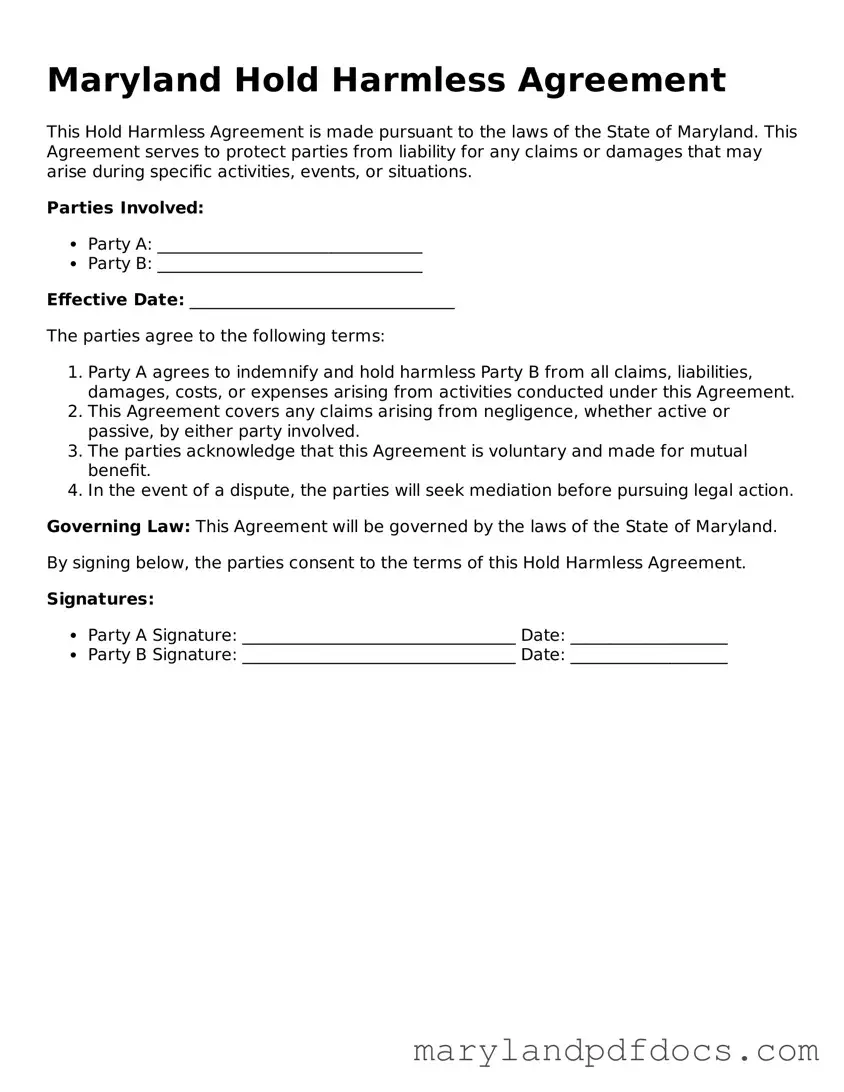What is a Maryland Hold Harmless Agreement?
A Maryland Hold Harmless Agreement is a legal document designed to protect one party from liability for certain risks or damages that may arise during a specific activity or event. It ensures that one party agrees not to hold the other responsible for any injuries or damages incurred while participating in that activity.
Who typically uses a Hold Harmless Agreement?
This agreement is commonly used by organizations, businesses, and individuals who host events or provide services. It can be beneficial for contractors, property owners, and event organizers who want to mitigate their risk of liability.
What are the key components of the agreement?
The agreement usually includes the names of the parties involved, a description of the activity or event, the scope of liability being waived, and any specific terms or conditions. It may also outline the duration of the agreement and any applicable laws governing it.
Is a Hold Harmless Agreement legally binding?
Yes, a properly executed Hold Harmless Agreement is legally binding in Maryland. However, the enforceability can depend on the clarity of the language used and whether the agreement complies with state laws. It is advisable to consult a legal professional to ensure its validity.
Can a Hold Harmless Agreement protect against all types of liability?
Not necessarily. While the agreement can provide broad protection, it may not cover gross negligence or willful misconduct. Courts may not enforce provisions that attempt to waive liability for serious wrongdoing. Understanding the limitations is crucial.
How do I create a Hold Harmless Agreement?
Creating a Hold Harmless Agreement involves drafting the document with clear terms and conditions. You can find templates online, but it is often best to tailor the agreement to your specific needs. Consulting with a legal professional can help ensure all necessary elements are included.
Do I need witnesses or notarization for the agreement?
While not always required, having witnesses or notarization can add an extra layer of validity to the agreement. This can be particularly important in case of disputes. Check local laws to determine what is necessary for your specific situation.
How can I ensure that the other party understands the agreement?
Before signing, take the time to discuss the terms with the other party. Ensure that they comprehend the implications of the agreement and encourage them to ask questions. Clear communication can help prevent misunderstandings later on.
What should I do if I need to modify the agreement?
If modifications are necessary, it is important to create a written amendment that clearly outlines the changes. Both parties should sign this amendment to ensure that the new terms are enforceable. Verbal agreements for changes are generally not sufficient.
